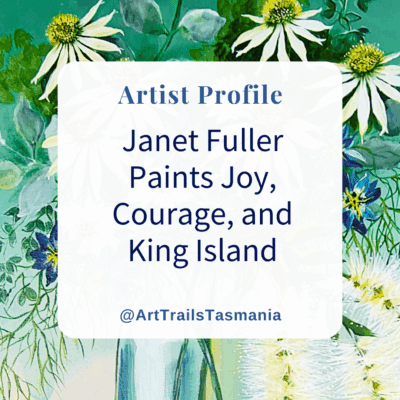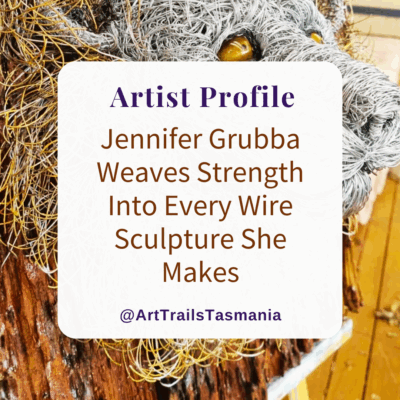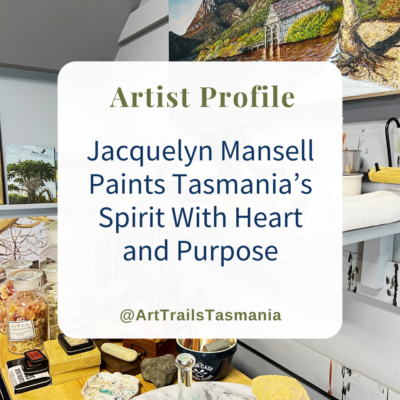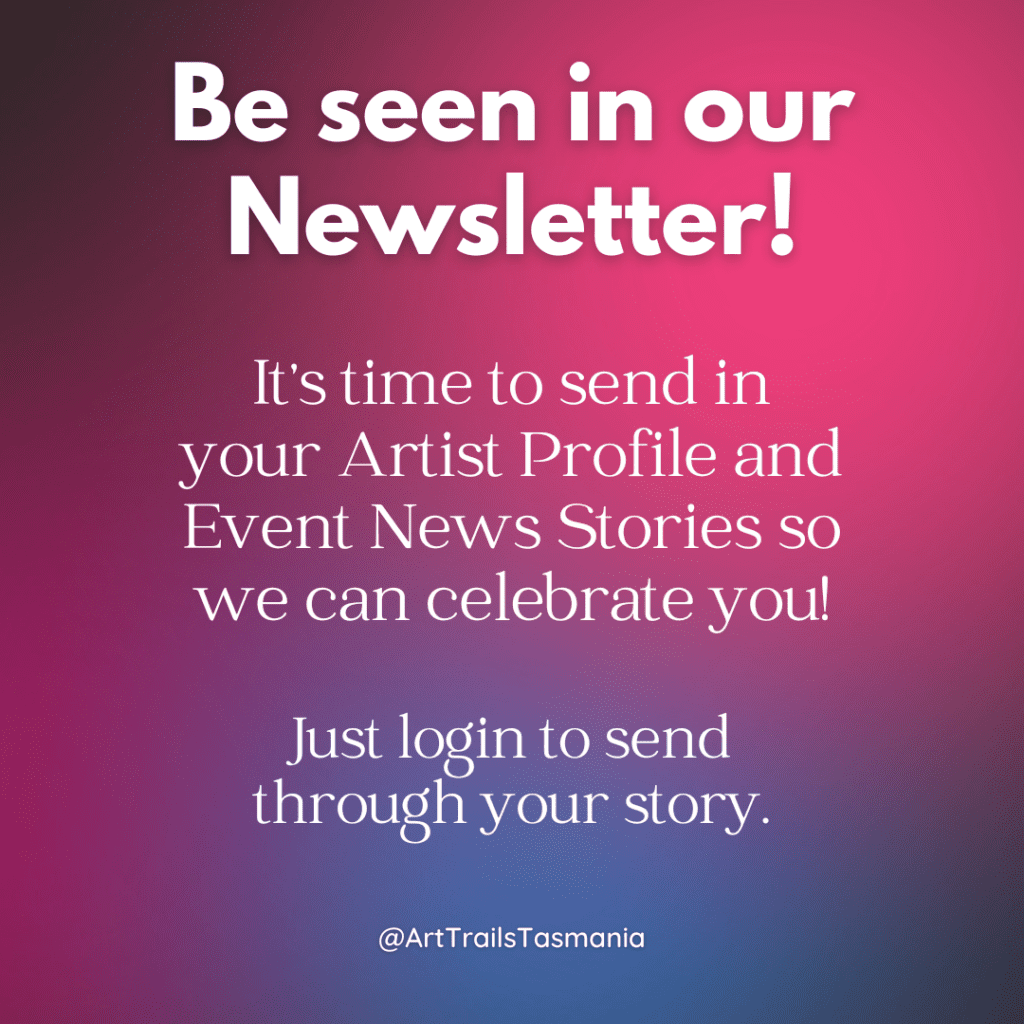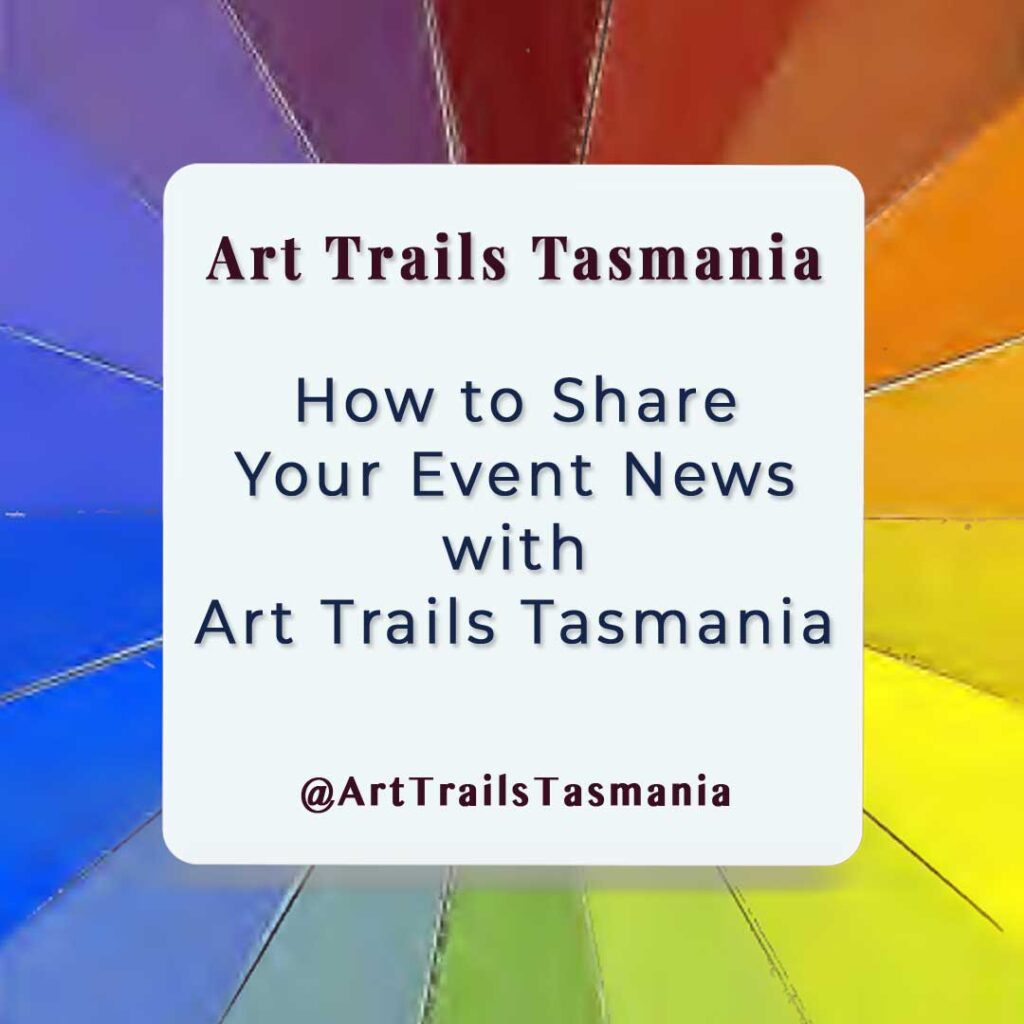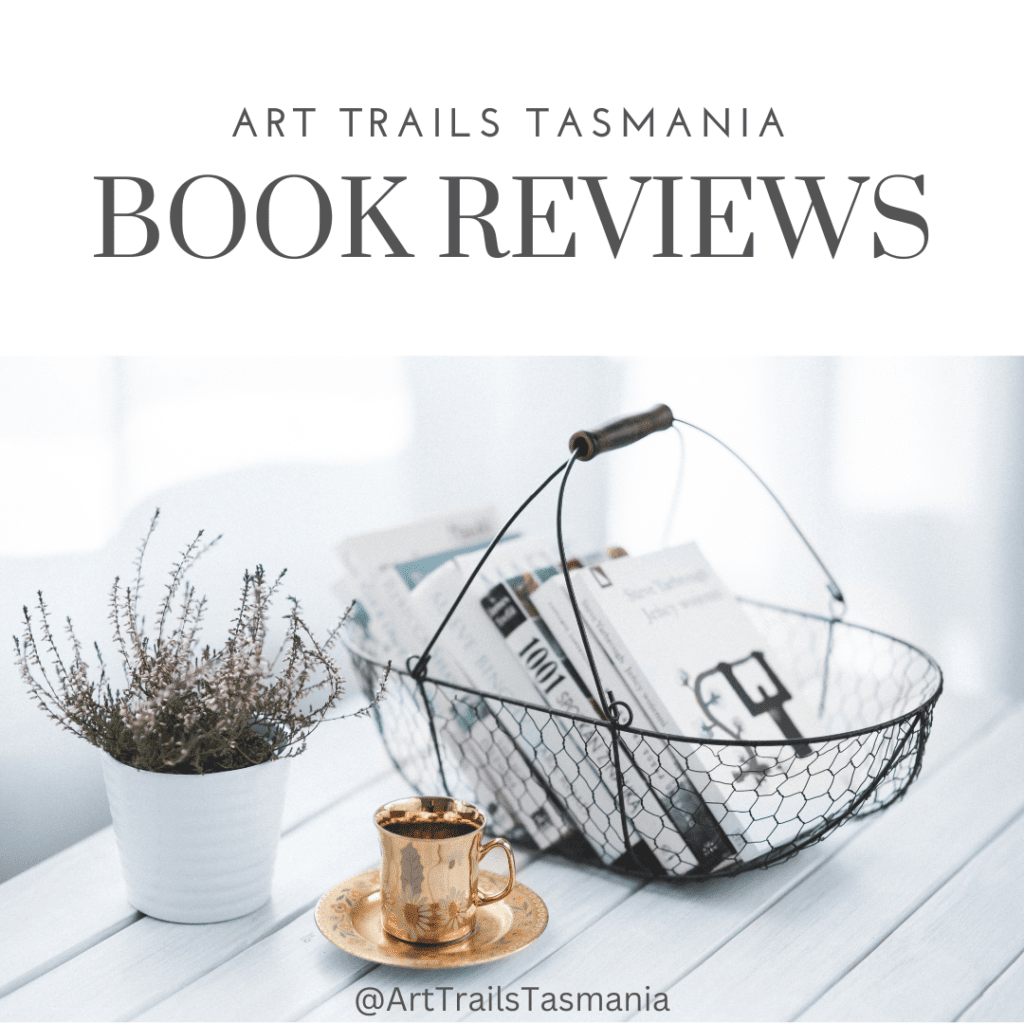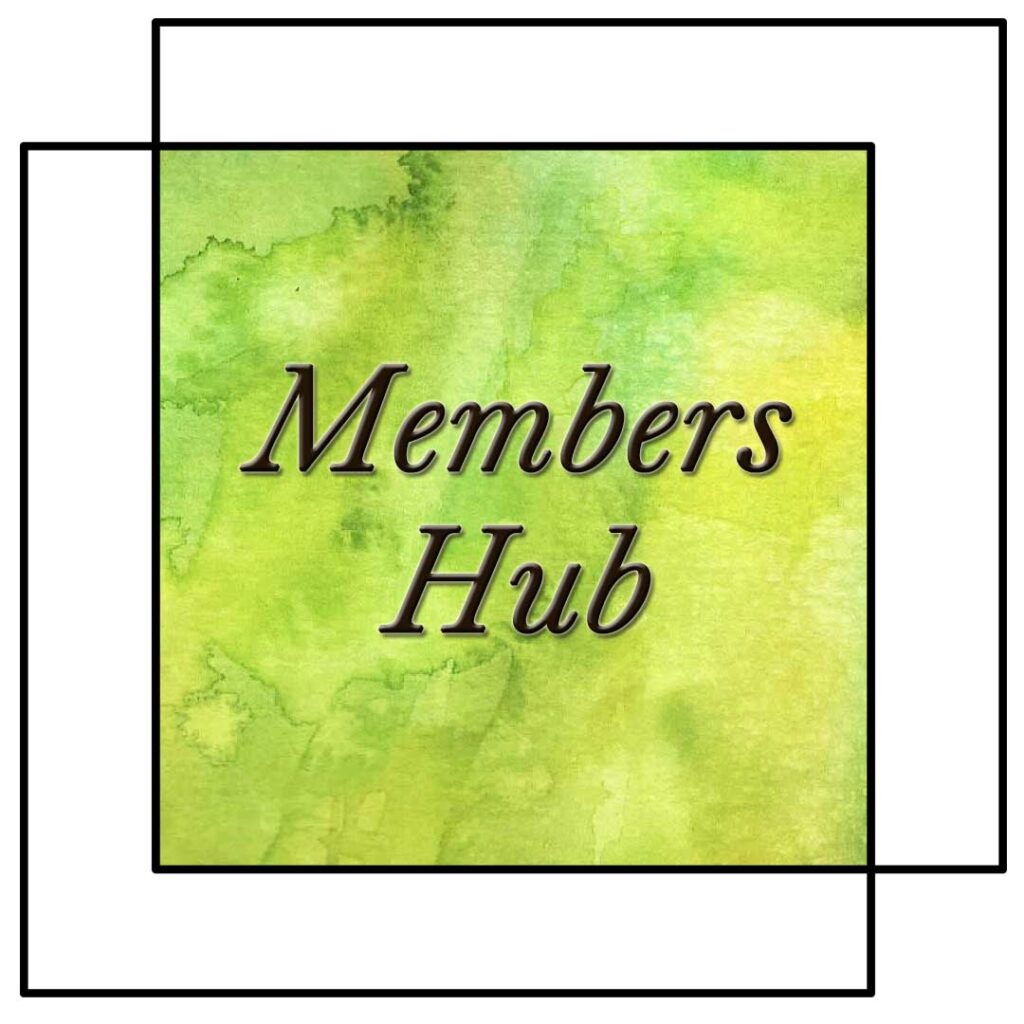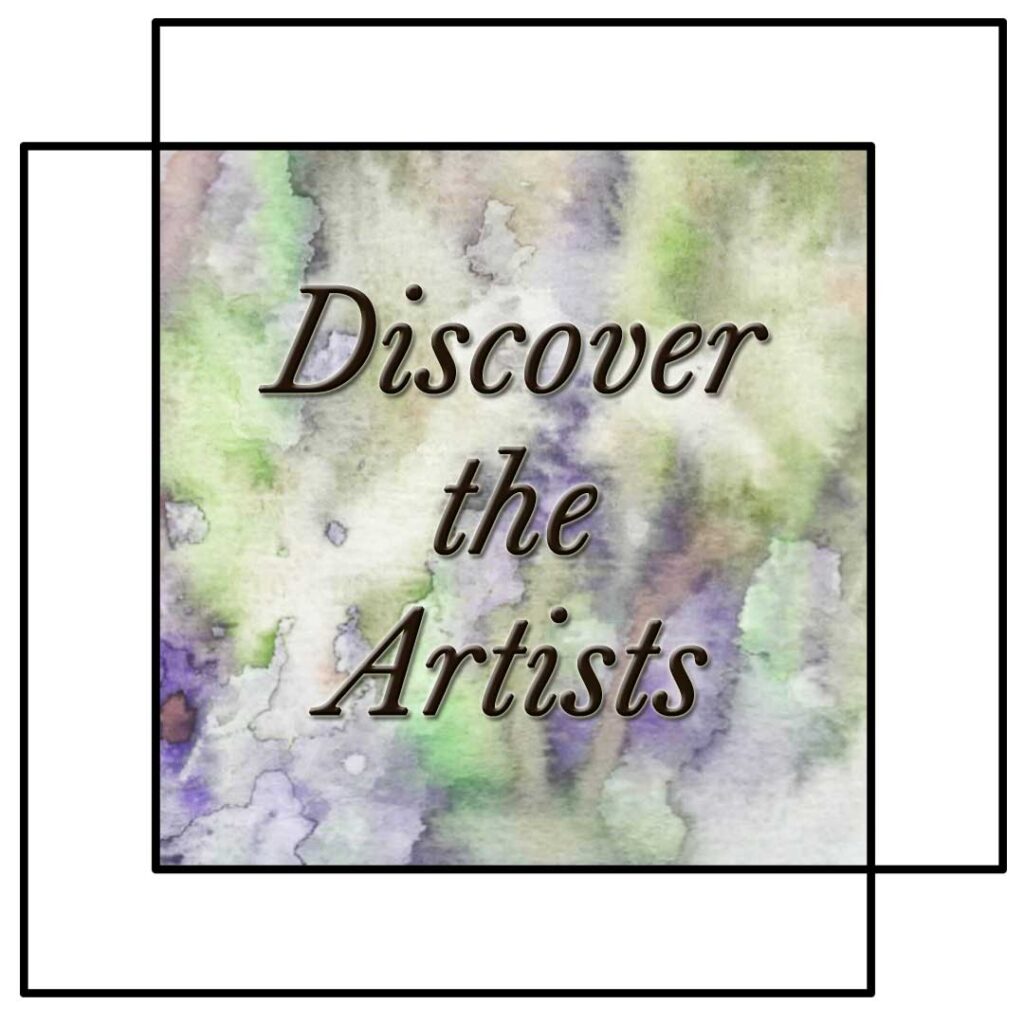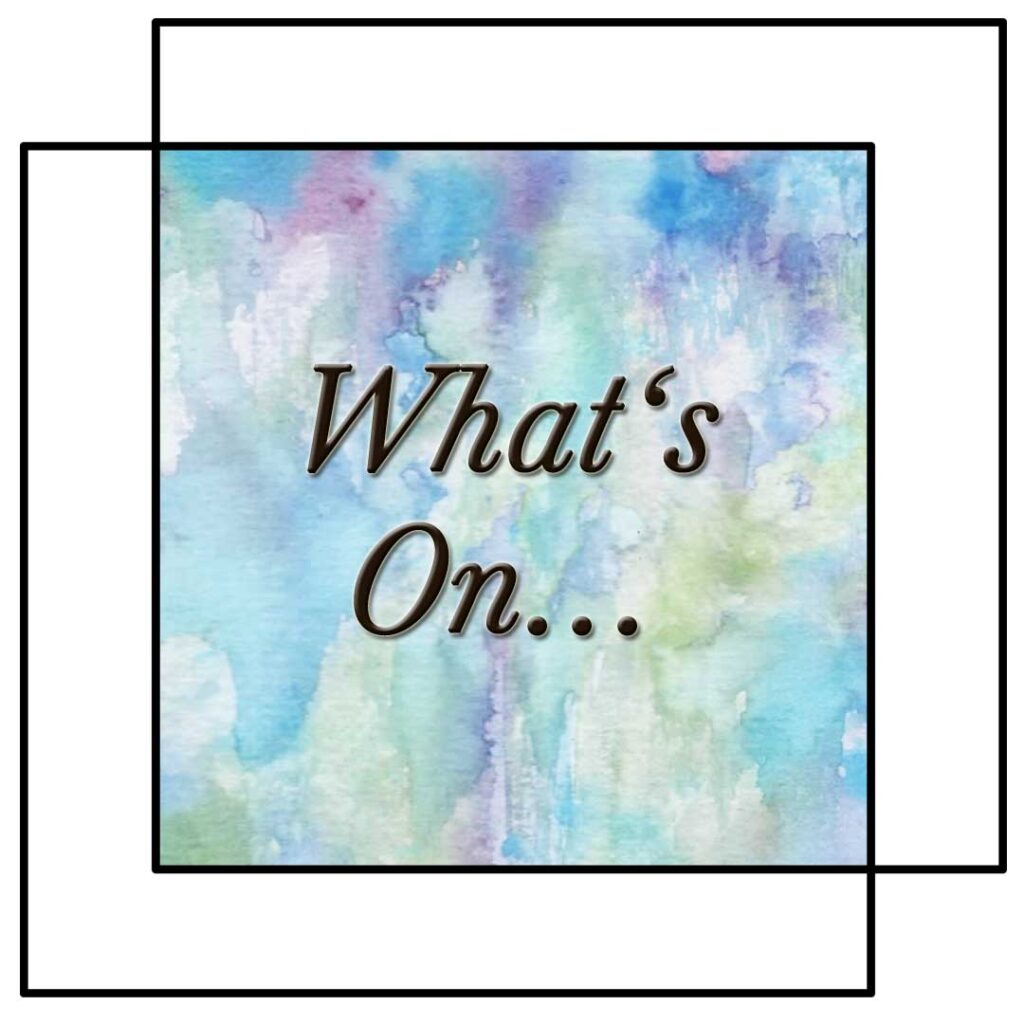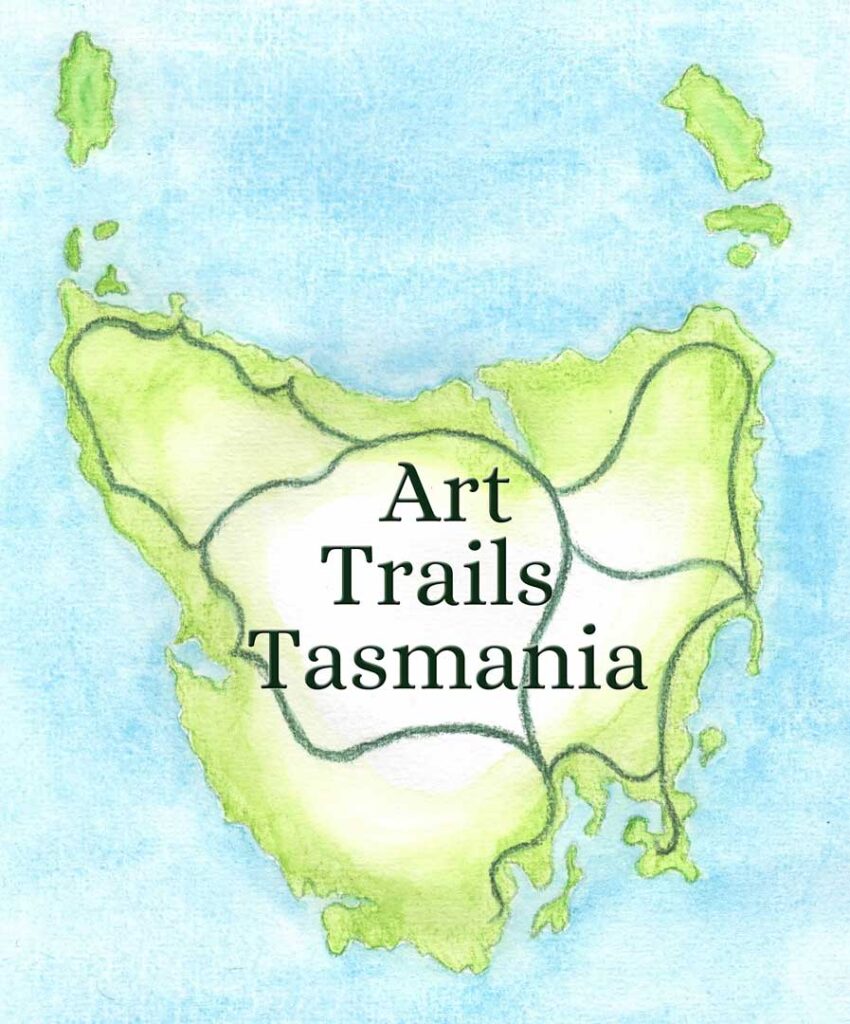A Sense of Wonder Inspires Creativity
Living in Tasmania, it’s impossible not to be inspired by the wild.
I grew up in New Zealand, and even after many years on Hobart’s eastern shore I’m still in awe of the unique wildlife found only on this island.
Each encounter is a reminder of how special—and how fragile—these species and places are.
That sense of wonder shapes the way I create. My drawings aren’t just about detail for detail’s sake—they’re about honouring the species we risk losing and encouraging people to look closer at what’s in their own backyards.
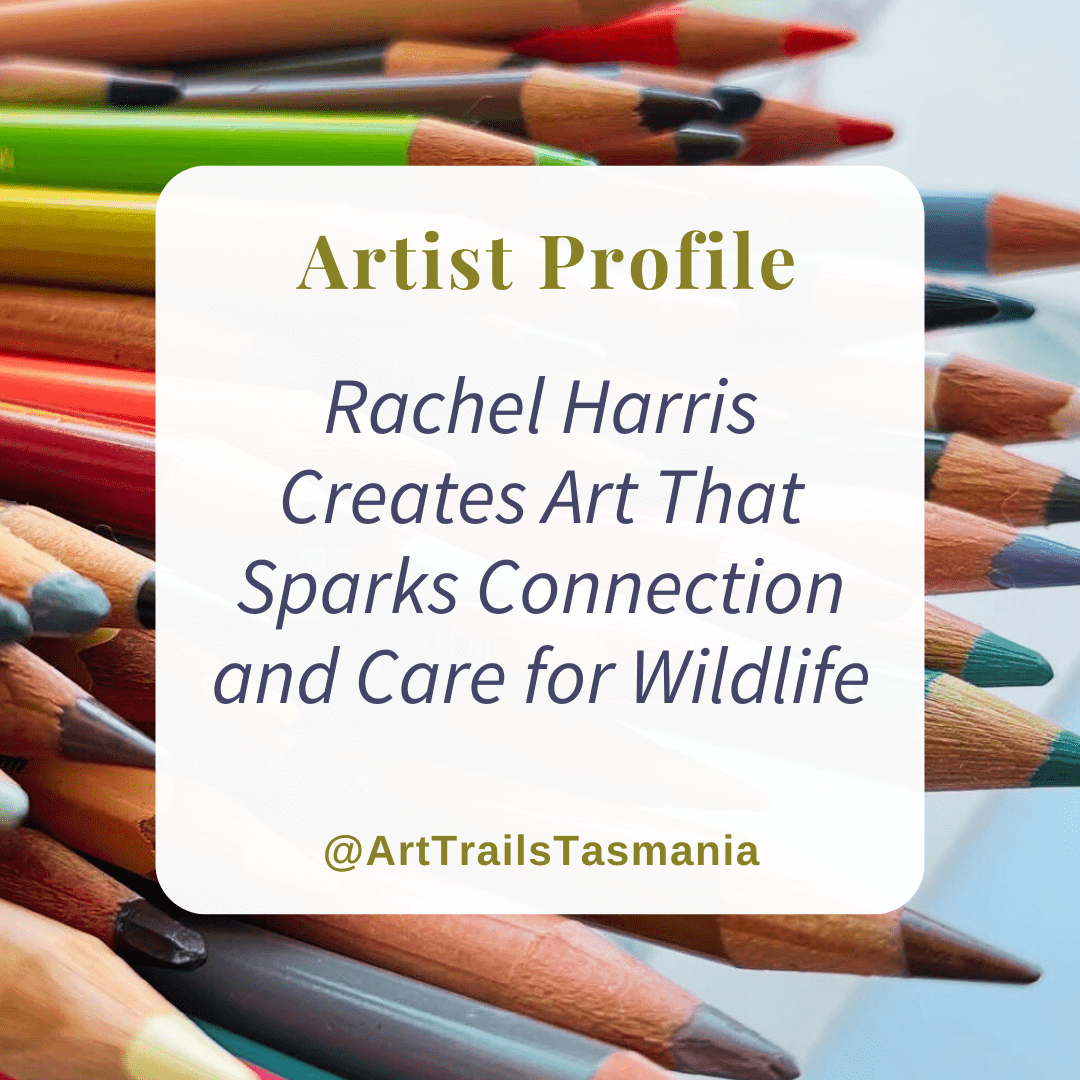
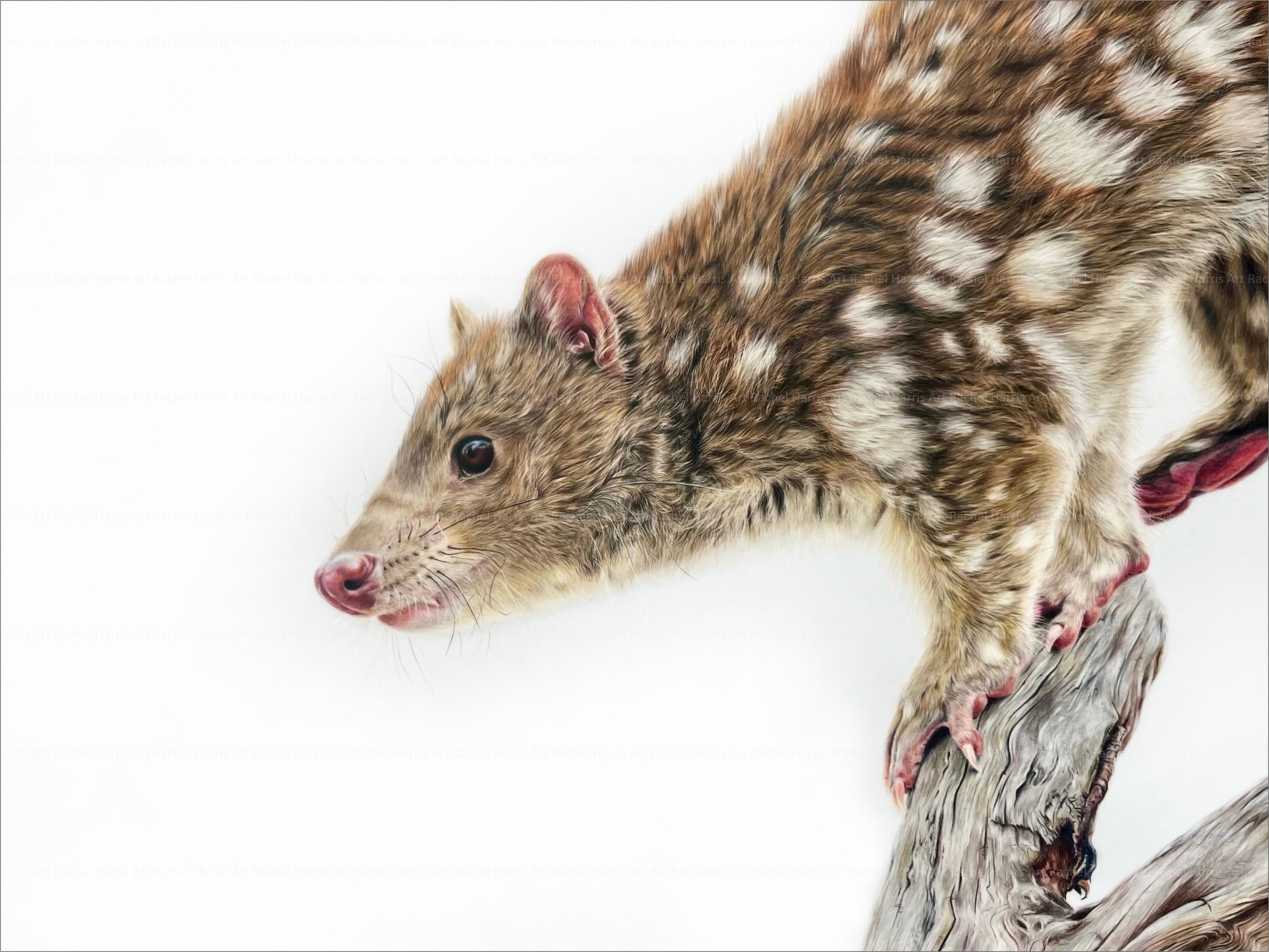
Art and Sparking Connection
I see my role as sparking connection, so that care and protection naturally follow.
One of my favourite activities is going on day walks around Tasmania.
The physical exertion, fresh air, sunshine (and, let’s be honest, rain), and time in nature are endlessly refreshing and rejuvenating.
Those walks not only clear my head but also feed my creativity, giving me an endless source of reference and inspiration for new work.
Tasmania gives me both the subjects and the purpose behind my work, and I can’t imagine creating art anywhere else.
The Call of Art and Animals
For as long as I can remember, I’ve been drawn to two things: animals and art.
My curiosity about animals led me into science, where I studied animal behaviour and completed a PhD in zoology and chemical ecology.
I published research on echidnas here in Tasmania, and on ring-tailed lemurs in the United States.
For years, my creative side sat quietly in the background while I worked in research and later in public policy.
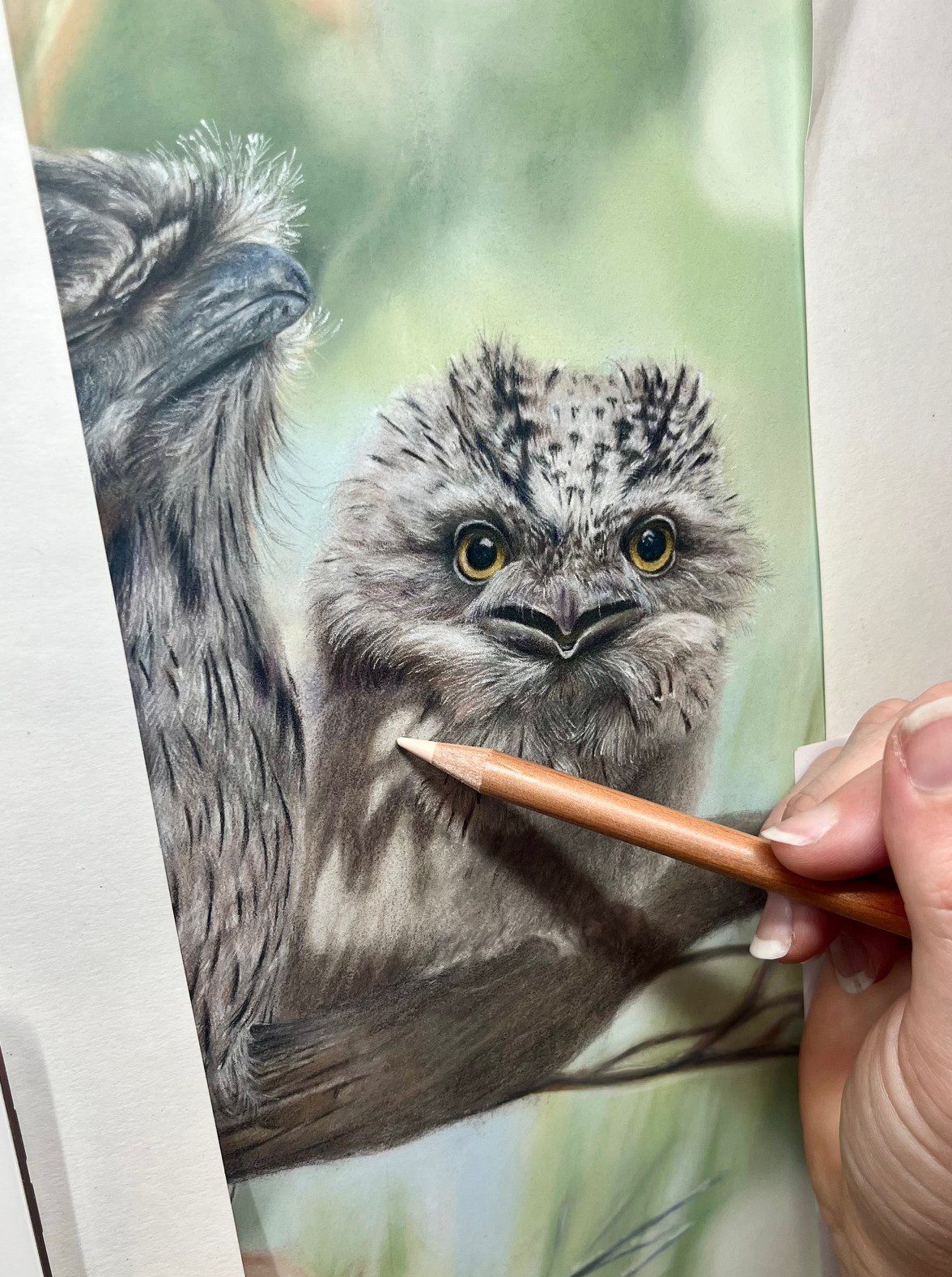
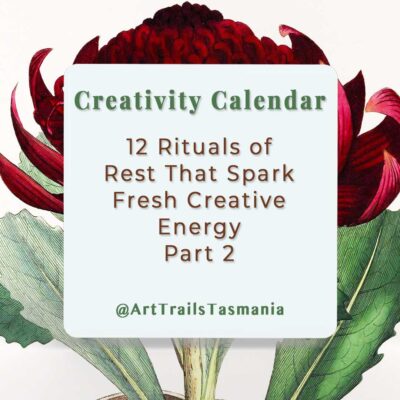
12 Rituals of Rest That Spark Fresh Creative Energy Part 2
Explore 12 rituals of rest that spark fresh creative energy. Embrace how rest fuels creativity and supports joyful, sustainable practice.
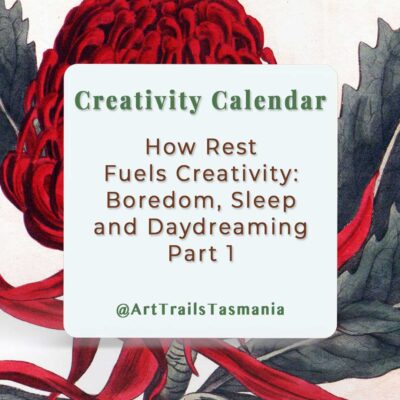
How Rest Fuels Creativity: Boredom, Sleep & Daydreaming Part 1
Discover how rest fuels creativity through boredom, sleep, and daydreaming. Explore why downtime is vital for Tasmanian artists, makers, and dreamers.
Lockdown Artist & Reconnection
I am a self-confessed “lockdown artist.” In 2020, I didn’t attempt sourdough or guitar—but I did pick up a pencil again.
What began as a way to unwind became a reconnection with creativity and with nature.
I shared my work online, received my first commission, and things spiralled from there.
Art and Science
Each drawing reminded me that art can do what science alone sometimes can’t—it can spark emotion, invite connection, and inspire care.
Today, while I still work in a nearly full-time day job, I dedicate my evenings and weekends to drawing.
I’ve only been creating seriously for a few years, but it’s a passion project I am slowly growing.
Creating Art and the Dining Table
My studio is, quite literally, half the dining table.
When I first chose coloured pencils as my medium, I thought they would be neat and easy to clean up—but over time my pencils, sharpeners, and stacks of reference photos have claimed permanent residence.
These days, my husband and I rarely use the table for eating. I like working in the heart of the house.
It means my art isn’t shut away in a separate room—it’s part of daily life.
I usually draw in the evenings, surrounded by the familiar rhythm of home.
It may not be glamorous or purpose-built, but it feels authentic.
For me, it’s proof that you don’t need the “perfect” studio to create—you just need a space and some time.
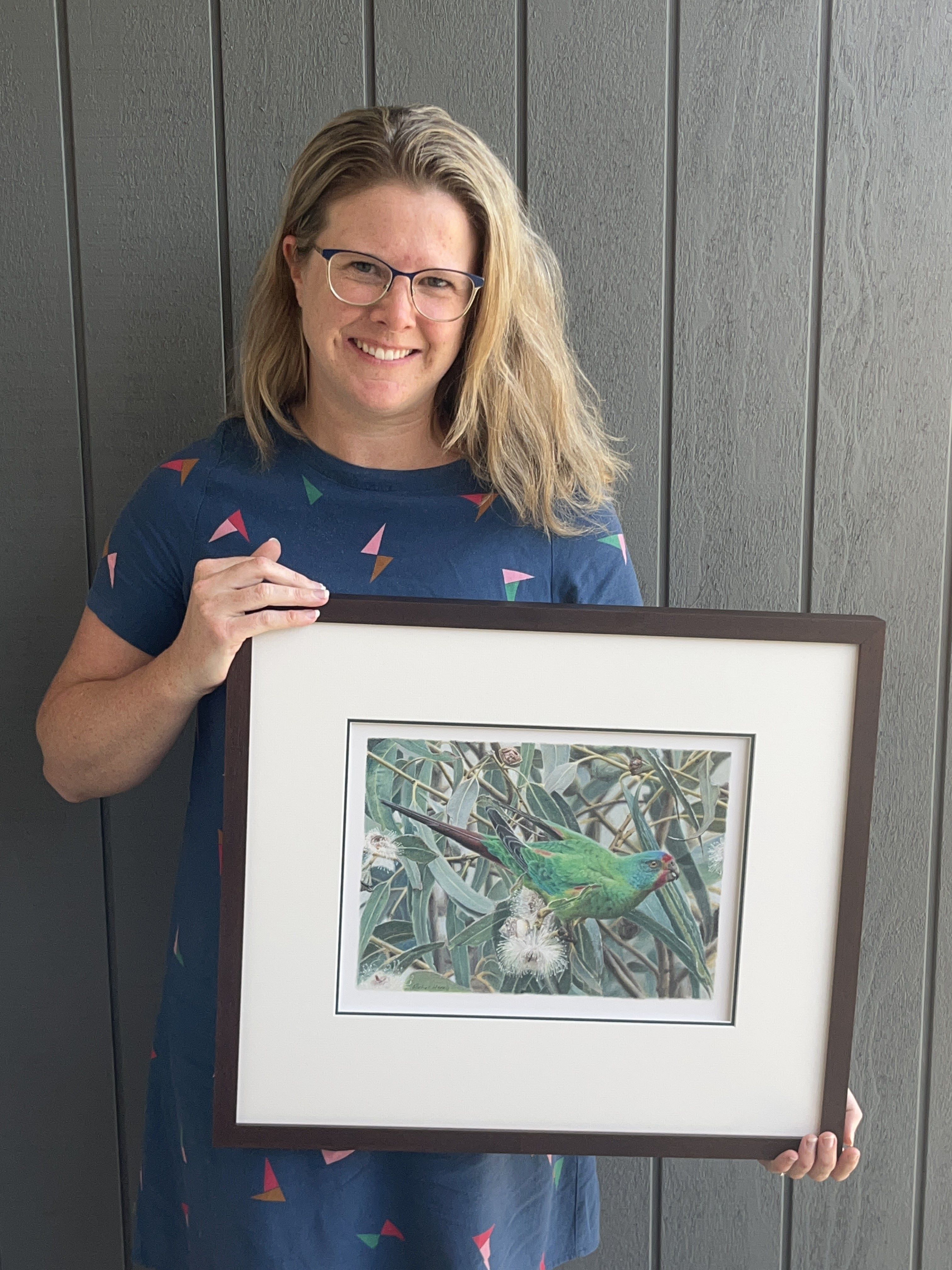
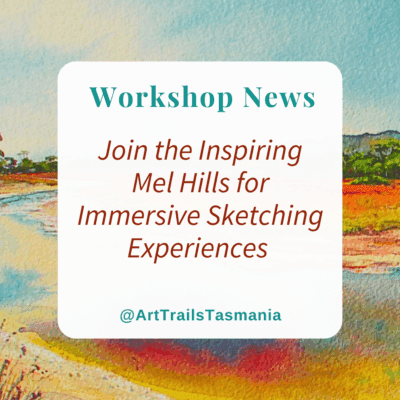
Join the Inspiring Mel Hills for Immersive Sketching Workshop Experiences
Be part of the immersive nature journaling and sketching on location workshop with popular watercolour teacher and wildlife artist Mel Hills.
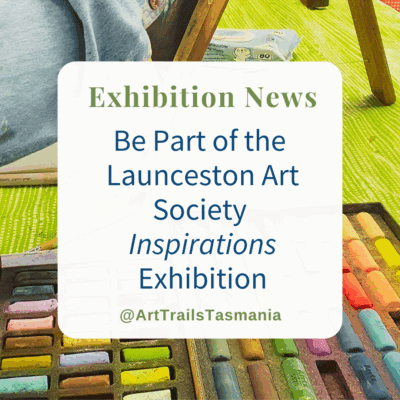
The Launceston Art Society Inspirations Exhibition
You’re invited to the Launceston Art Society “Inspirations” exhibition, a community art exhibition showcasing the diverse talents of local members.
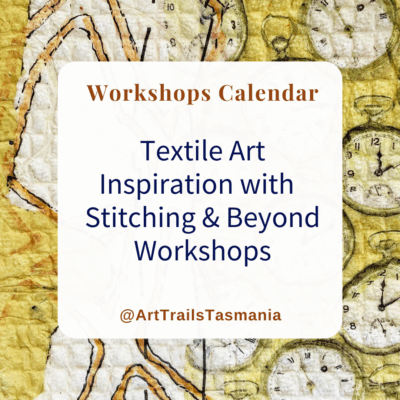
Textile Art Workshops with Stitching and Beyond
It’s time to be inspired by the latest calendar of workshops being brought to you by the friendly Stitching and Beyond group as they celebrate the textile arts!
Creating with a Range of Art Mediums
Colour pencils are my main medium, but I’m also dabbling with pastels, graphite, charcoal, ink, and watercolour.
I think I initially chose pencils because they’d require minimal clean-up. What I didn’t appreciate at the time is how notoriously slow they are to work with.
I’m normally pretty impatient, but I’ve come to see drawing as a meditative, calming activity.
A single drawing can take weeks or even months to complete, with layers of colour slowly building depth, texture, and detail.
But that’s also what I love about pencils—the patience they demand, and the realism they allow me to achieve.
Layer Upon Layer
With careful layering and blending, they can capture the glint in an animal’s eye, the softness of fur, or the sheen of feathers in extraordinary detail.
Pencils don’t seem to be widely used in fine art, but I think that’s slowly changing.
I’m determined to push what they—and I—can do.
For me, they’re the perfect blend of science and art: precise, technical, yet capable of evoking deep emotion.
Building an Art Business
Like most artists (I think), I never started creating with the intention of building an art business.
But when people began asking about commissions and prints—including custom pet portraits—I realised I needed to figure it out—and fast!
I’ve been on a steep learning curve ever since, and I’m still figuring it out as I go today.
Growing Anything Takes Time
What I wish I knew at the start is not to expect results overnight. Growing a business takes time, persistence, plenty of mistakes, and more than a little self-doubt.
It means wearing many hats—marketer, social media manager, accountant, packaging assistant—often all in the same day.
And hopefully still squeezing in time for the actual creativity, too.
With an almost fulltime day job, it’s important that I manage my expectations and energy levels so I don’t burn myself out.
Authentic Connections via Art
The biggest surprise has been that people connect just as much with you as they do with your work.
Sharing the process, opening up about the “why” behind each drawing, and letting people see a little more of me has led to connections with some truly wonderful, like-minded people.
Witnessing others react and connect to my artwork has been the most rewarding part of this journey.
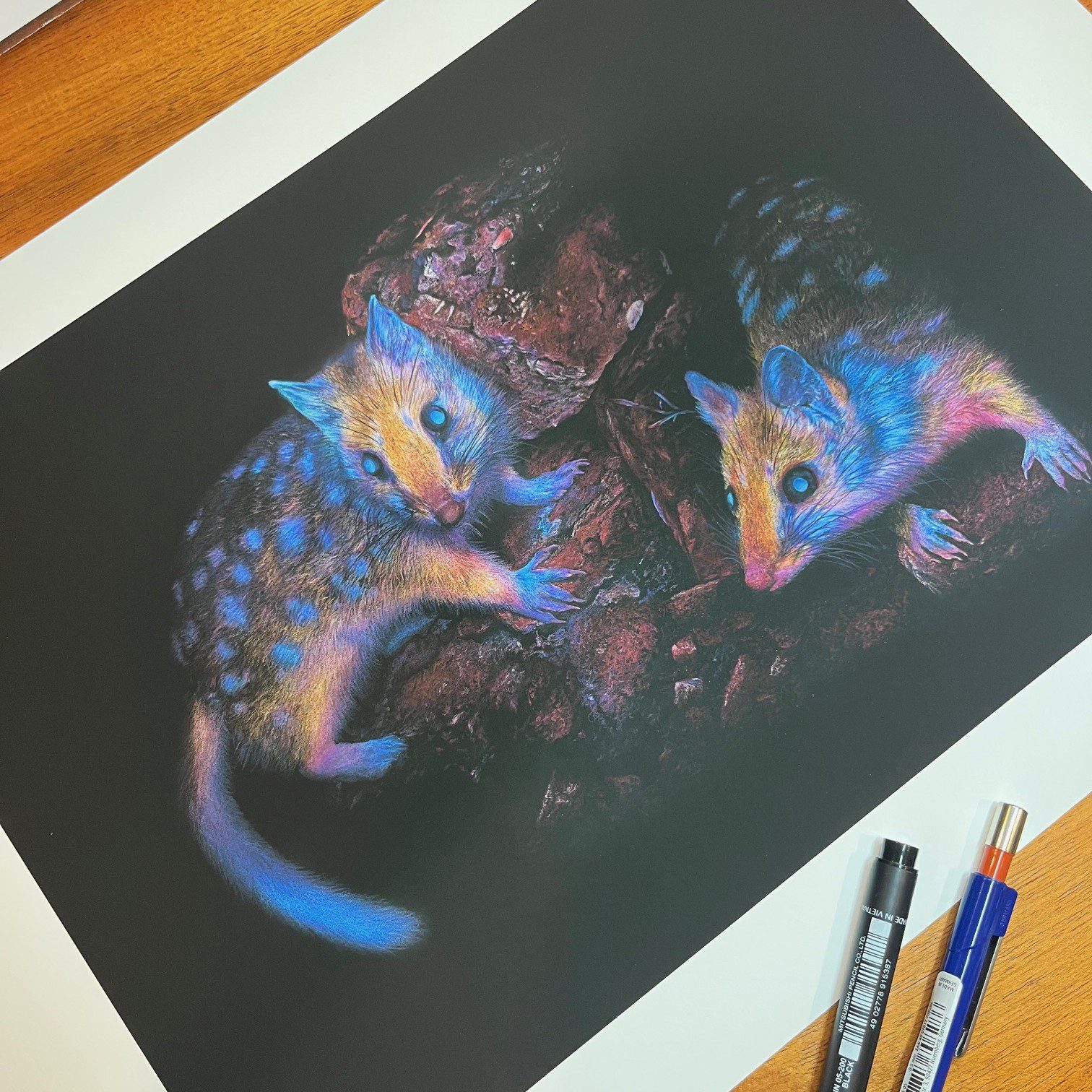
Flourishing with Art Groups
One of the best things I did for my growth was to get out of my comfort zone and join local art groups.
Exhibiting with them pushed me out of my comfort zone, connected me with other artists, and gave me the confidence to share my work publicly.
I had my first (joint) exhibition in November 2024 and I’m planning for my first solo in 2026.
Entering national and international competitions has also been invaluable.
Art and Endangered Species
Sketch for Survival, for example, combines art with wildlife conservation, raising awareness and funds for endangered species.
Taking part in something that aligned so strongly with my values was both motivating and rewarding, and it pushed me to refine my technique.
Competitions like that, and the Holmes Prize, gave me deadlines and the chance to get my work alongside those of other artists I admire.
Every society, exhibition, or competition teaches you something about your values. For me, that clarity is just as important as technical improvement.
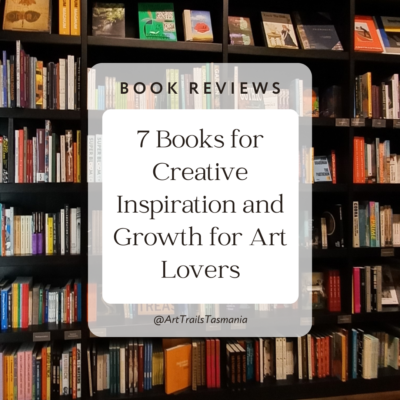
7 Books for Creative Growth Book Review
In our latest book review we take an immersive journey through creative inspiration and growth for makers and art lovers.
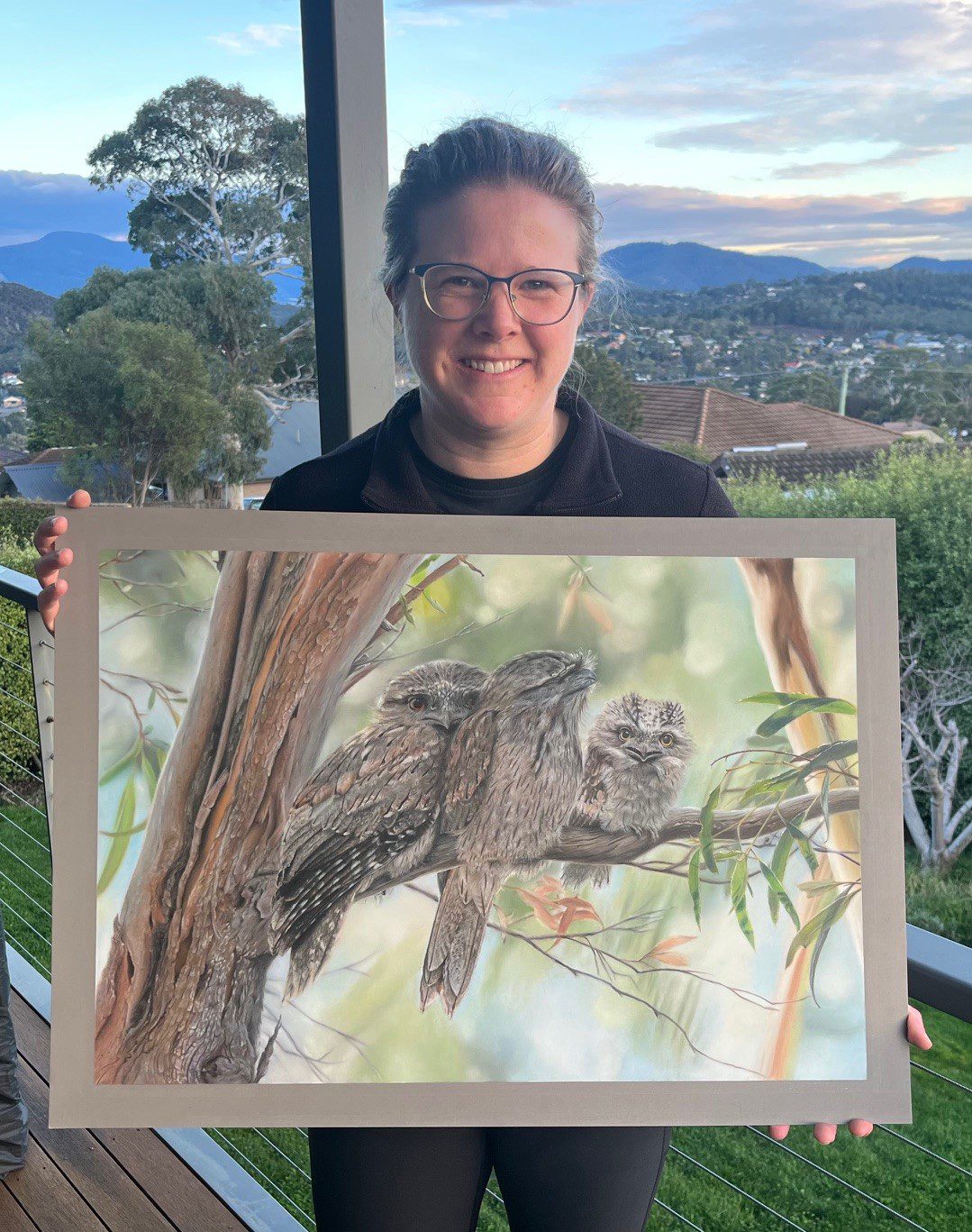
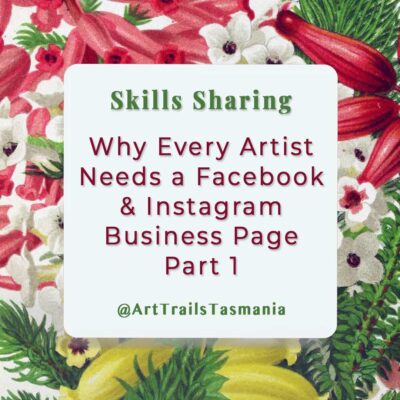
Why Every Artist Needs a Facebook and Instagram Business Page – Part 1
Discover why every artist should have a Facebook and Instagram business page. Learn how Meta values business accounts, the benefits & how it works for you.
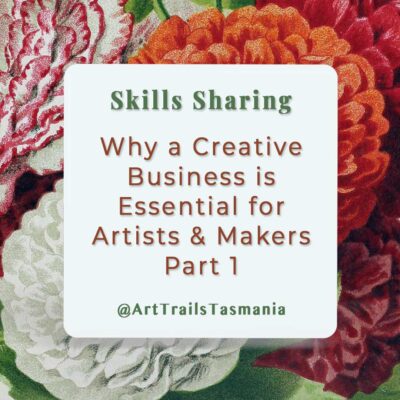
Why a Creative Business is Essential for Artists & Makers Part 1
Discover why building a creative business with multiple income streams is vital for artists & makers in this 2 part series. Learn how to grow & sustain your creativity.
Creating More Than Beautiful Art
For me, drawing wildlife is about more than creating a beautiful piece of art. It’s a way of noticing, of paying attention.
My science background taught me to look closely at details, and art gives me the chance to translate that curiosity into something others can see and feel.
Art as a Bridge
What I’ve also learned is that art can act as a bridge.
It can connect people to species they might otherwise overlook, spark conversations about conservation, or simply remind someone of a creature they’ve loved.
Every time I hear someone say, “I’ve never noticed that before,” or “I recognise that bird!” I feel I’ve achieved something meaningful.
The Real World Impact of Art
A big part of my practice is making sure my art has real-world impact.
From day one, a portion of proceeds from every original drawing and print goes directly to local wildlife conservation organisations.
That means every piece someone chooses not only celebrates nature—it also helps protect it.
Art is Always Evolving
My art is still evolving, and I imagine it always will be.
But at its core, it will always be about connection—between people and the natural world, between science and emotion, between beauty and impact.
Looking ahead, I’m excited to continue growing my practice.
I’m seeking opportunities for a solo exhibition, exploring wholesale partnerships, and building my business so I can share my work with more people.
If you’d like to explore more of my art, or join my monthly newsletter where I share the stories behind the drawings and the wildlife that inspires me, I’d love to welcome you.
About the Artist
Rachel Harris is a Tasmanian wildlife artist whose colour pencil drawings combine scientific precision with meaningful impact and heartfelt storytelling.
With a PhD in zoology, Rachel brings a trained eye for detail to every feather, whisker, and scale she draws, creating lifelike artworks that invite connection with the natural world.
Her work celebrates Tasmania’s unique wildlife and supports local conservation organisations.
Rachel’s artworks have been exhibited locally and internationally.
Her original drawings, fine art prints, and commissioned works—including wildlife and pet portraits—can be purchased through her website, offering collectors the chance to bring natural beauty into their homes.
Be sure to follow the Rachel on Facebook and Instagram for beautiful wildlife art to be in your feed and subscribe to her artist newsletter for early access to her latest works and more.
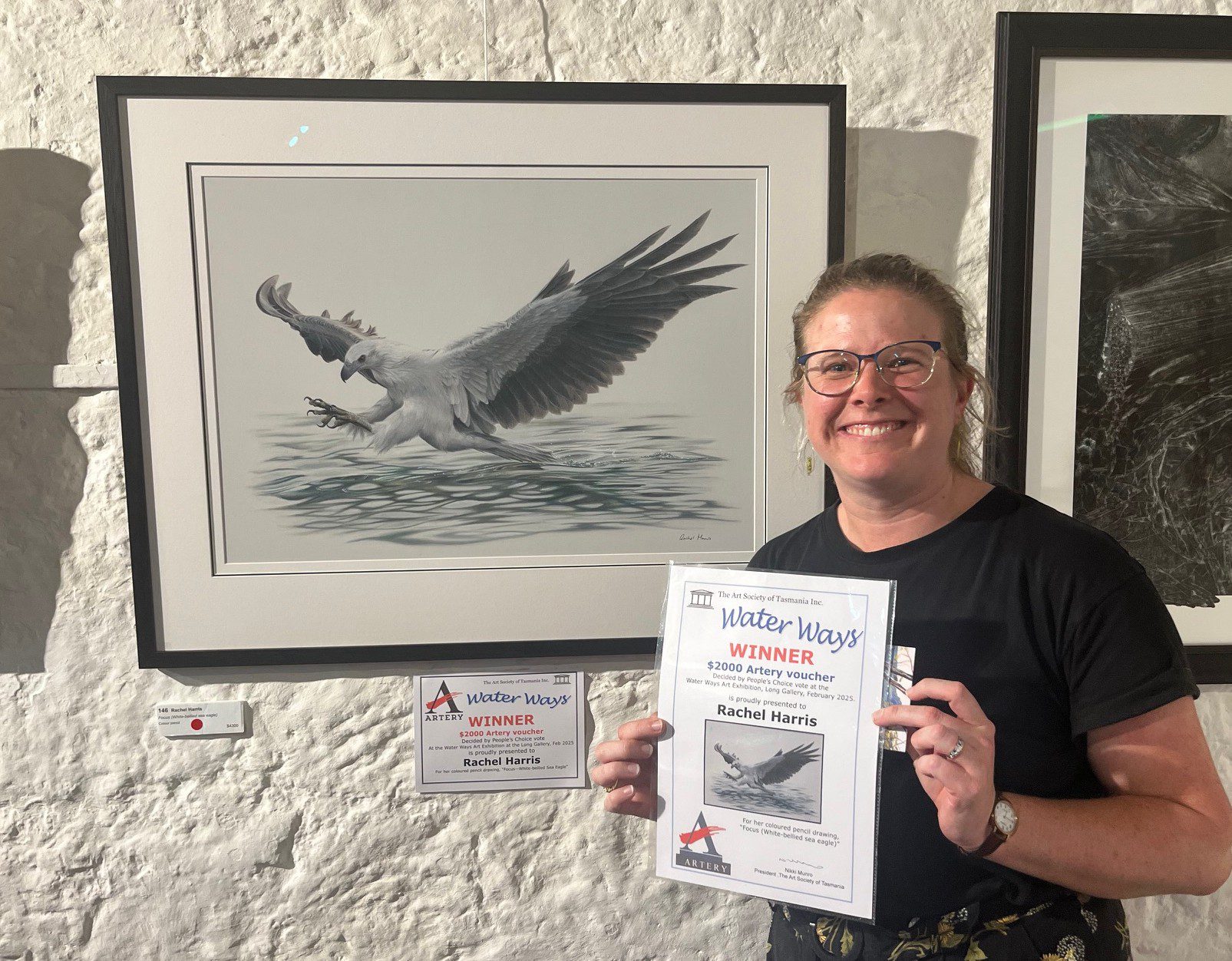
Read Another Artist Profile…
Janet Fuller Paints Joy, Courage & King Island
Inspiration is Everywhere on King Island I love it when things just work. That one amazing brushstroke that elevates the ordinary to something that makes you go "wow, that's it". When colours come together in a way that's so bold they explode off the canvas, or so...
Jennifer Grubba Weaves Strength Into Every Wire Sculpture She Makes
Jennifer Grubba is Untangling a Path to Healing with Her Wire Sculpture Practice My wire sculpture has been part of my recovery after a diagnosis of PTSD, Depression, Severe Anxiety and Agrophobia. I find the wire is incredibly meditative, and I can easily lose myself...
Jacquelyn Mansell Paints Tasmania’s Spirit With Heart and Purpose
Meet Tasmanian Artist Jacquelyn Mansell The greatest joy in my art comes from the profound connection between myself, the subject, and the viewer. Immersing myself in the landscapes and wildlife of Lutruwita (Tasmania) allows me to translate the island's raw beauty...
Read What Our Members Say About Belonging
Join the growing, supportive artists community today and have your Artist story told here.
Belinda is doing a great job creating a professional looking artist hub online. Check out the profile I posted recently to see how well she does them. To all my artist friends let’s help make this THE go to place to discover local artists.
You won’t regret joining Art Trails Tasmania . It’s a welcoming community for creatives at any career stage.Becoming an Art Trails Tasmania member wasn’t a hard decision for me to make as it’s such a wealth of knowledge and support.Being member provides a quality way to showcase your creative endeavours and it’s quickly growing in reach.
We operate a home based picture framing business and recently joined Art Trails Tasmania as a means to giving us exposure to the wider artist community. We have almost immediately seen increase in activity thru our online sites, which I am certain will lead to more opportunities to grow our business.
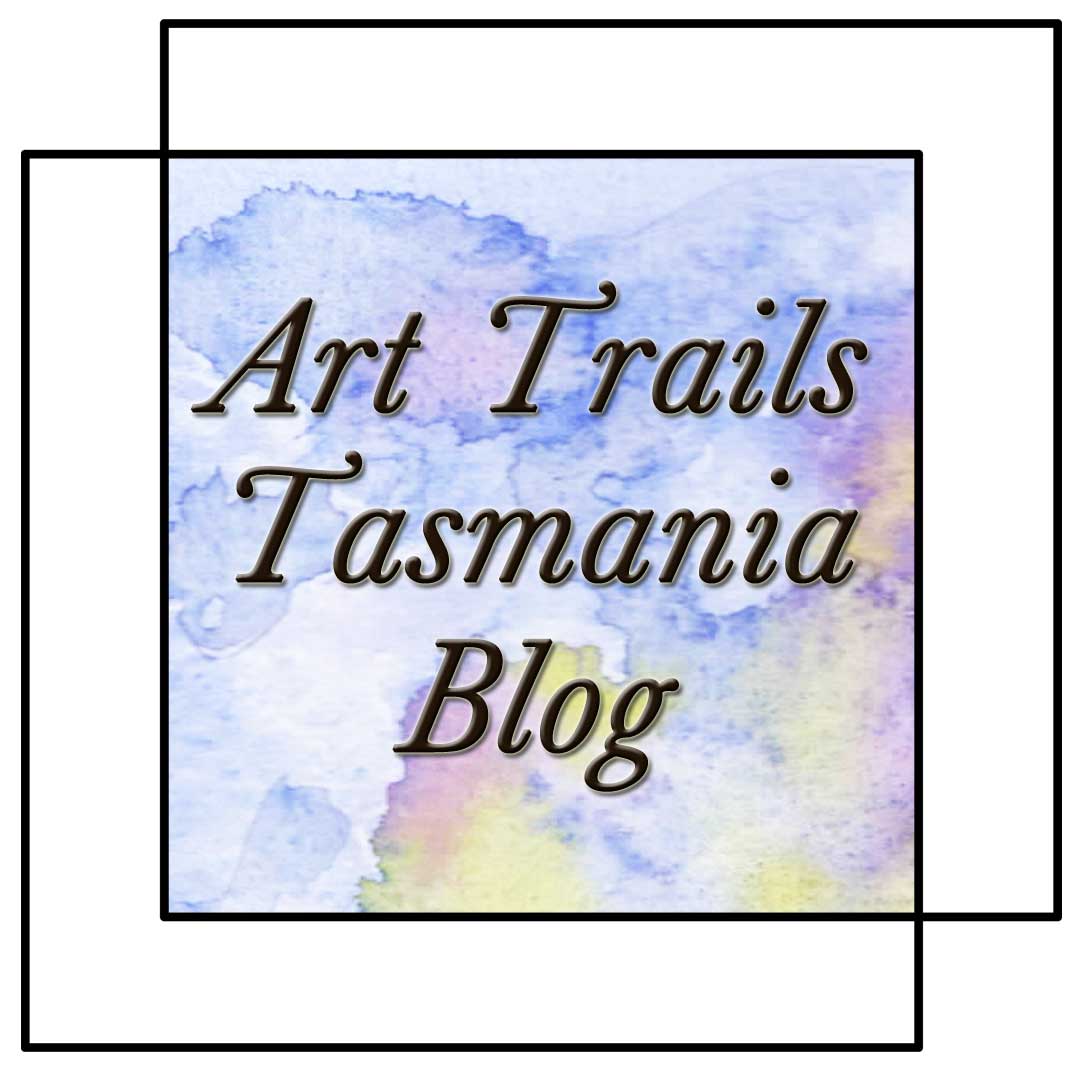
Artist Profile Stories
I want there to be more arts and crafts in our world, in our communities and in our own lives. Hopefully you’ve found this blog post inspiring and interesting.
So I’m creating, with your help, Art Trails Tasmania, allowing all of us who feel this love to create more of it.
And the Art Trails Tasmania blog is a key part of making this happen, telling the stories of members. It’s about what they have happening with workshops and classes, exhibitions, open studio trails, where to find their outlets, markets, fairs and festivals so you can shop their creations as well as their art and craft retreats.
Also being shared are the supporters of our artists, the galleries, shops, cafes, art societies and groups, places to stay and artist in residencies.

